#frev compilation
Text
People planning to stab Robespierre compilation
What was your plan in going to Robespierre’s house.
To talk to him in person.
What did you want to talk to Robespierre about?
I don’t want to give any response or explanation regarding this question.
Do you realize that your answers lead one to believe you had the intention of committing a crime, and that you must explain your intentions?
She does not want to explain further, and adds that she intended to ask him for instructions on the situation and the strengthening of the Republic.
Do you realize that your declarations and obstinacy to not want to explain yourself cannot be reconciled with such a plan, which is why I’m again asking you to explain yourself?
She persists in not wanting to answer.
Did anyone propose to you the plan of going home to Robespierre and did you tell anyone about it?
No.
Did you go to Robespierre’s house several times during the day?
No.
When you went to Robespierre, did you bring with you knives, and if yes, of which sort?
I had in my pocket two folding knives, one in tortoiseshell and the other in ivory, both trimmed in silver: the one made of ivory was given to me by my brother in 89, having found it at Prés-Saint-Gervais. The other was given to me by my grandmother three or four years ago. It was loaded with rust; I cleaned it and tried to remove the rust by scraping the blade with another knife, eight or nine days ago. I rarely use it.
Do you regularly carry two knives?
I carry the tortoiseshell one regularly, the ivory one showed up in my pocket, I didn’t know it was there.
When you went home to Robespierre, did you have the intention of using these knives to kill him?
No, moreover, we can judge as we please.
Interrogation of Cécile Renault, held on May 24 1794
At that time, the indictment that I (Lecointre) was preparing against the traitor (Robespierre) and his accomplices was completed; Fréron who helped me with his insights, Barras, Rovère, Thirion, Courtois, Garnier de l'Aube, Guffroy and Tallien etc advised me to attack him in person, so that success would be more certain. The roles were divided to support my opinion, and to combat with force the sophisms of Robespierre, but they were of the opinion that the memoir should be printed and distributed an hour before being read at the National Convention: Guffroy was in charge and had promised, from the 6th, to have it printed; and it was solemnly sworn by us that if the truth succumbed, we would immolate the tyrant in the middle of the Convention.
Conjuration formée dès le 5 préréal [sic] par neuf représentans du peuple contre Maximilien Robespierre, pour le poignarder en plein sénat: rapport et acte d’accusation dont la lecture devoit précéder dans la Convention cet acte de dévouement (1794), page 4
Bourdon de l'Oise, rightly frightened by the ease with which, until then, several batches of his colleagues had been delivered to the proscriptions of this tribunal, had wanted to exclude from the number of defendants, whom the two committees alone could bring there, any representative of the people: he had insisted that the decision could only emanate from the Convention itself, and by a special decree. On this subject, a great rumor arose within the assembly: the members of the two committees, whom Bourdon's motion implicitly accused of wanting to get hold of their antagonists, with Couthon and Robespierre at the forefront, had strongly qualified him as a caluminator. Robespierre, in his fury at being thus unveiled, had forgotten himself to the point of throwing the epithet of ”scoundrel” against Bourdon; and, far from retracting Bourdon's claim, he had insinuated that the latter was on his way to get arrested; that the committees could provoke it.
Bourdon, after this stormy session, had felt only too well that it was a fight to the death which had just begun between him and Robespierre: he had resolved to guarantee his own head, by the precipitous fall of that of Robespierre. It was with his own hand that he wanted to destroy this tyrant of the fatherland, this proud usurper who did not hesitate to degrade the national representation, in order to sacrifice it in detail to his disproportionate ambition. Once this decision to get rid of Robespierre by the dagger had settled in his head, Bourdon thought of taking, before the assassination attempt, some measures relative to his fortune. He took the keenest interest in a woman and several young children whose fate was linked to his own, and had made arrangements in their favor.
Now, it was me that Bourdon had chosen, to be both the preserver of his final wishes and the protector, after him, of these beings he loved. The day after 23 Prairial, Bourdon brought me to his house, making me believe that it was just a simple dinner. He then occupied a small bachelor's accommodation on rue des Saints-Pères in a house on the left, which only had a narrow door, without a doorman. His apartment was pointed out to me by a woman who was coming out, in despair at not having been able to get him to intercede for her husband. I had barely entered when Bourdon, without further circumlocution, said to me: “Listen, we’ve known each other for a long time; I know that you are a moderate patriot, that you are not very passionate about the republic; but you are an honest man, a good friend; and it is for these two reasons that I was able to open up to you about my projects and the measures they involve. Robespierre is my personal enemy; he attacked and threatened me in the middle of the Convention: he wants to kill me, in order to be able to more easily dominate the Convention and seize absolute power. I want to thwart his ambitious designs by immolating him with my own hand.”
At the same time, and as if he felt the need to convince me even more of the strength of his mind, he took out from under his bed an oblong casket, in which was tucked the coat he had worn on the day of the storming of the Bastille, the hat which, in the Vendée, had adorned his forehead as a representative of the people, and a large cutlass with which he was always armed on his expeditions. He took great care to point out to me that his coat was still covered with stains from the blood he had spilled at the Bastille, that his hat was riddled with the bullets of the Vendéens. As for the cutlass, he had more than once plunged it into the hearts of his enemies; it was the weapon with which he intended, at the first opportunity which presented itself, to strike Robespierre. I trembled lest the wall, which received these terrible confidences together with me, should share a syllable with anyone. Bourdon, to reassure me, said that for the development of his plan, he needed someone discreet enough to remain silent before and after the action; faithful enough to keep his will; zealous enough and enlightened enough to have it executed in due time. “It is you,” he said to me, “who will be my devoted confidant, I count on it and no longer worry about anything.” He immediately gave me his will with his instructions and some important titles.
God knows with what agitations this gift filled my soul, what bad nights I passed with the possession of this perilous deposit! At the slightest suspicion, at the slightest word of revelation, I would have been a dead man. What would happen if Bourdon had gotten arrested before or after the consummation of his revenge and the slightest indication of correspondence with him was administered against me? The sixteen days I spent in this state of uncertainty felt like centuries. Finally arrived, against all foresight, and without the isolated provocation on the part of Bourdon de l'Oise, this day, forever precious for humanity, of the 9th of Thermidor.
Souvenirs de M. Berryer, doyen des avocats de Paris (1839)
Tallien: I demanded earlier that one tears apart the veil. With pleasure, I just saw that it is torn apart entirely, that the conspirators have been unmasked, that they will soon be annihilated, and that liberty will triumph. (Loud applause.) Everything announces that the enemy of the national representation will fall under its blows. We give a proof of our republican loyalty to our nascent republic. I forced myself to remain silent until now, because I knew of a man who approached the tyrant of France, that he had formed a proscription list. I did not want to remonstrate, but I have seen the session of the Jacobins yesterday: I have trembled for the patrie ; I have seen the army of a new Cromwell forming itself, and I am armed with a dagger in order to pierce its breast, if the National Convention did not have the courage to issue a décret d'accusation against him. (Loud applause.)
Tallien at the Convention, July 27 1794
#robespierre#maximilien robespierre#frev#frev compilation#cécile renault#tallien#bourdon d’oise#how can people think history is uninteresting when ”plan formed on 5 prairial to stab robespierre to death in broad daylight”#is a legit title of a pampleth???
79 notes
·
View notes
Text


Obsessed with Couthon in his Marat headwrap
22 notes
·
View notes
Text

"sorry for my bad english" but it's 1775 and you're writing a whole-ass medical paper in your second(?) language
[Image ID: An excerpt from Jean-Paul Marat's An Essay on Gleets, translated to French. The text reads:
"AU LECTEUR: Je n'aurai pas besoin de solliciter la bienveillance du public quand il saura que ces pages ont été écrites par un étranger insuffisamment au courant de la langue pour en éviter les fautes. Celles-ci, d'ailleurs, seront le plus facilement du monde pardonnées, si le lecteur attache moins d'importance à la tournure du style qu'au sujet lui-même, qui a trait à la santé humaine."
End image ID.]
#being esl is just.. like that honestly. yes i have been speaking english for years yes i still worry ill fuck up#god . compiling things for note-taking and stuff for my thesis and GOD. hes just like me fr fr#personal#frev
16 notes
·
View notes
Text
yuumori hits different when u had a hyperfixation on the french revolution
#if the holmes family has to be the descendant of one of the frev leaders#it would be desmoulins#or even lavoisier bcs chemistry??#but it wouldnt be robespierre#william's background holds surprising similarities to d'alembert#yknow the mathematician who invented series and took part in the compilation of the encyclopedia#d'alembert is one of my historical favs so im happy abt that!
0 notes
Text
Frev locations compile
Thought of compiling a list of frev significant locations so it can help with recommendations for anyone who happens to be travelling/visiting! This is only done to my knowledge and not a complete list, please feel free to suggest if you happen to know more locations that I completely missed!
so here is the frev pilgrimage list! Long post warning.
(Note: The items are not in any particular order)
(Note: I typed this post up a long time ago but couldn't finish, a lot of thanks to the people who helped out on contributing information and your patience with me.)
Musée Carnavalet (Paris)
This one is very obvious, it is a must go for seeing a collection of frev related artifacts and paintings, including Couthon’s wheelchair, Robespierre’s hair, the most iconic portraits etc. Also its FREE.
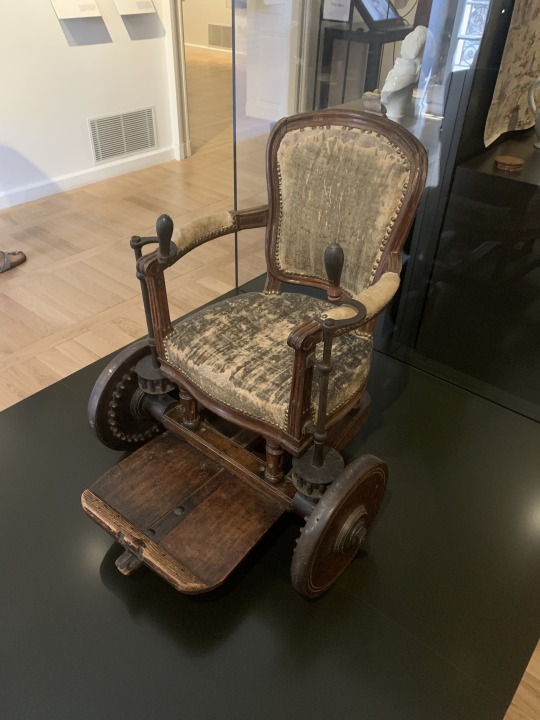
Panthéon (Paris)
You can see the statue of the National Convention deputies. It doesnt have too much related to frev directly, but Rousseau and Voltaire (and Carnot…..) are interred there
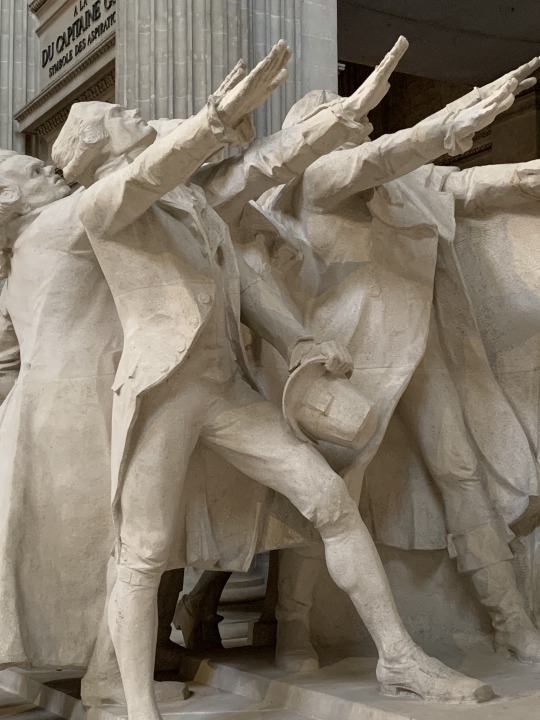
La Conciergerie (Paris)
If you want to see the Deseine bust of Robespierre, but cant go to Vizille, there is a copy of it here within Paris at the conciergerie. It is the place where most frev figures as well as Antoinette spent their last monents.

Musée des archives nationales (Paris)
(June 2023) There is a temporary exhibit featuring frev rn which I highly recommend (also its free to go so like GO)
But beyond the temporary exhibit, I believe there are still a few things in permanent collection (Robespierre’s note book page, Antoinette’s last letter in prison, Comte d’Artois’ letter etc), including the famous 9 thermidor table that Robespierre supposedly lied on. the museum is free to visit.

Père la Chaise (Paris)
@robespapier wrote a better post on navigating the cemetery. It helped me so much with finding the graves of Lebas, Elisabeth and Eleonore Duplay! Thank you so much for the guide!

Rue Saint Honoré (Paris)
the current address of the Duplays household is 398 rue saint-honoré, which is now next to a louboutin store…. There is a commemorative plaque there indicating Robespierre’s residence there.
Im not sure about going inside the residence….There was construction when I visited and the door was open, heres how it looks on the inside.
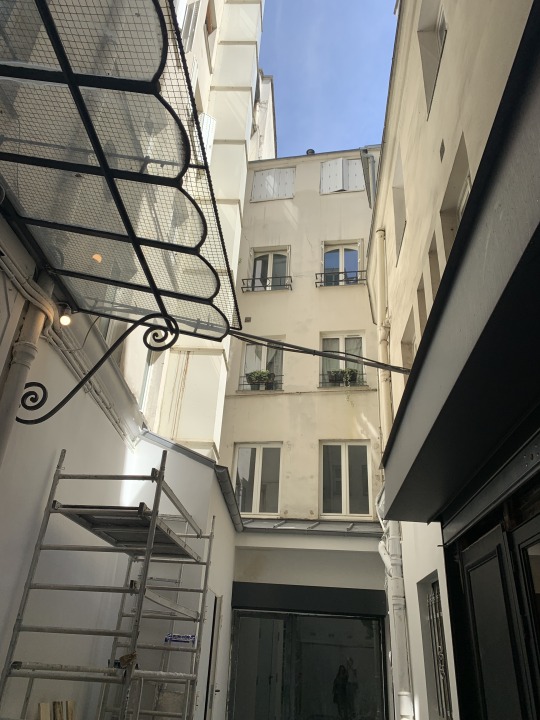

SJ’s bust (Paris & Angers)
I have not visited either of the two locations yet, but you can find that white bust of Saint-Just (that seemed to be modelled after the pastel portrait in the Carnavalet) in either Petit Palais (Paris) or Galerie David d’Angers (Angers).
@orpheusmori has posted some Petit Palais pictures here
@robespapier has posted some Galerie David d'Angers pictures here
Marat sign (Paris)
i have an image of this plaque sitting on my phone, I forgot where it was located until @orpheusmori helped me track the location of it! It is in the Odéon area and should be in the small narrow street with the back side of Le Procope. It commemorates the location as an important area during the French Revolution as well as the place where Marat established his printing shop.
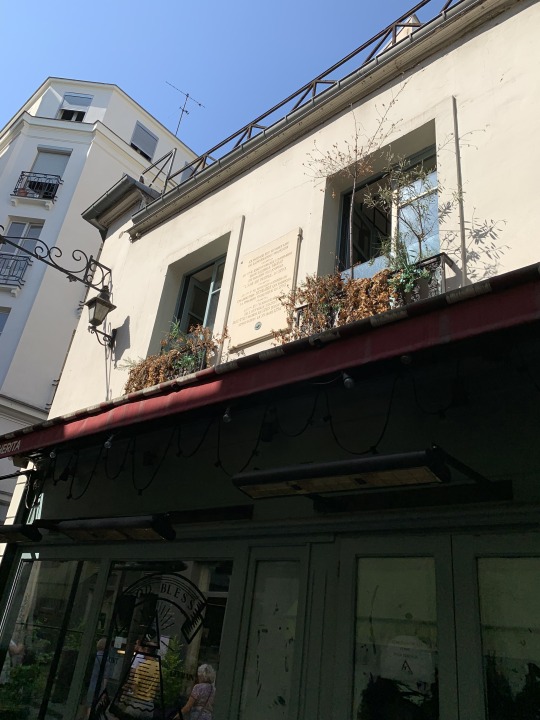
The front of the same building also has another Marat plaque! I didnt know about it before thank you @orpheusmori for finding and contributing the photo! This one is above an Jewellery store (Amour de Pierres) https://maps.app.goo.gl/8X9zgKYpMiLJcULq7

Olympe de Gouges sign (Paris)
Once again, i have a photo of the plaque proving its existence, but I took it years ago and i dont remember where it was exactly.... It was all in the Odéon area, it shouldn’t be too far from the other….
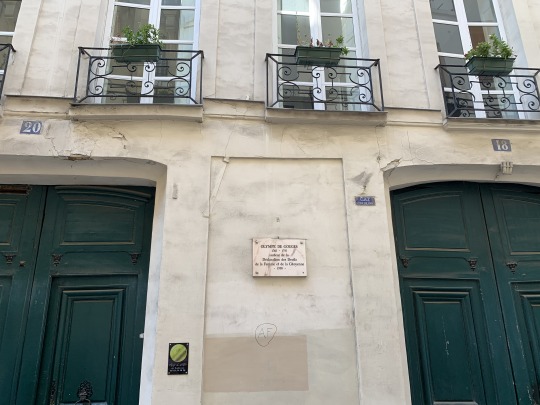
Danton statue (Paris)
there is a Danton statue! Right outside the Odéon metro! You cant miss it. Also the placement of the statue is where he once lived.

Procope (Paris)
Its a really old cafe frequented by a lot of philosophes as well as many frev figures. There is also a bicorn from Napoleon inside. Right now its still a restaurant establishment, and its difficult to visit unless you eat inside….which is expensive….
However ! This whole general Odéon area is full of other frev landmarks (some more mentioned below). Including the metro station which has a bust of Danton.

Versailles revolutionary room (Versailles)
Beyond the royal family, there is a room dedicated to a lot of major Revolutionary Army generals and battles. Theres that one painting of Lafayette if u into that
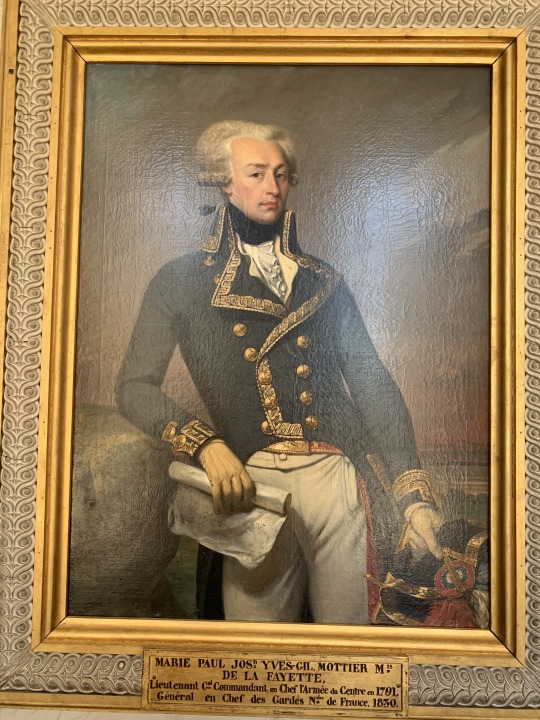
Musée des armes/Invalides (Paris)
It has a significant collection of military artefacts from the French Revolution and its a really good resource for armory researches. The museum also has a sword that belonged to Lafayette, as well as a sword belonging to Carnot during the Directoire (image below)

Louvre
The Louvre does not have a lot relating to the French Revolution but it has a few significant paintings and a lot of David’s work. One of the Death of Marat copies produced by David’s studio should be in the museum, as well as a painting featuring the battke of fleurus (with SJ cameo)
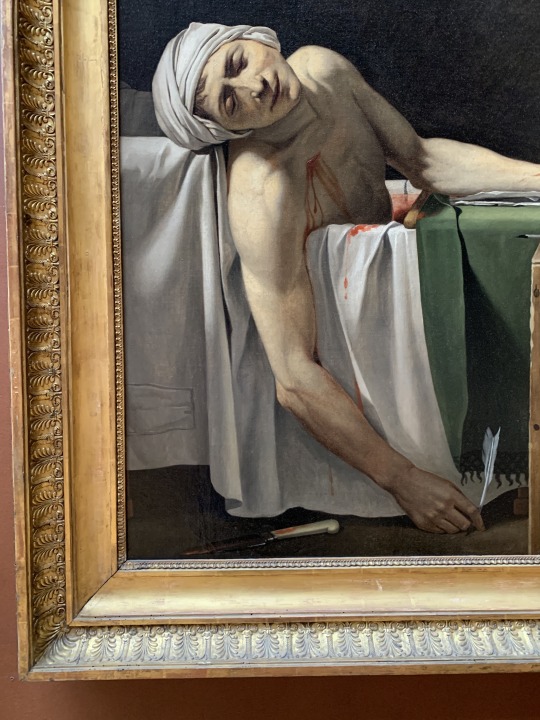
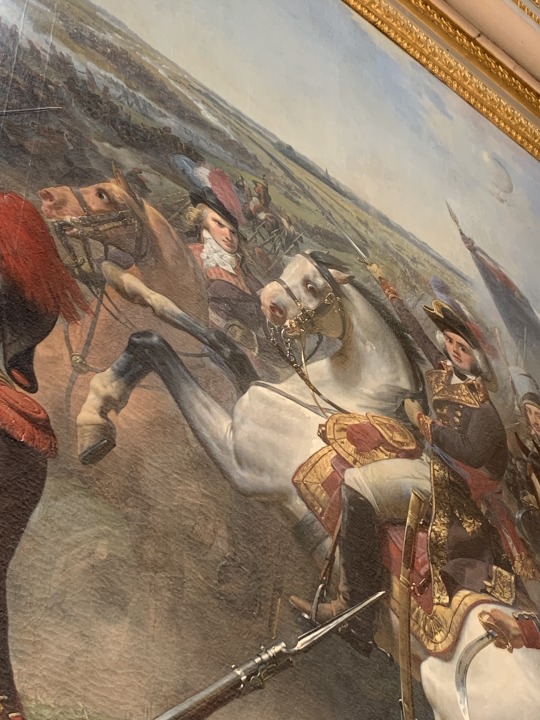
Tennis court (Versailles)
Near the palace of Versailles you can find the room where the deputies swore the famous oaths. It is free to enter, although last time I went it was undergoing construction, hopefully it should have finished by now.
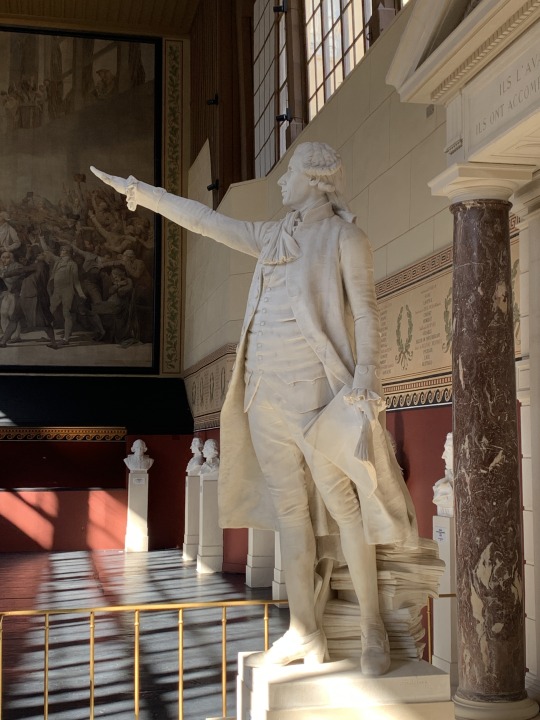
Musée de la Révolution Française (Vizille)
If you can go to Vizille… GO TO VIZILLE! The easiest way by transport would be to stay at Grenoble then take one of the buses that runs between Grenoble and Vizille. It is a whole museum dedicated to the revolution (and it is free) and the park is really pretty. This is where you can find the statue of Marat,

The Deseine busts including dear Bonbon,
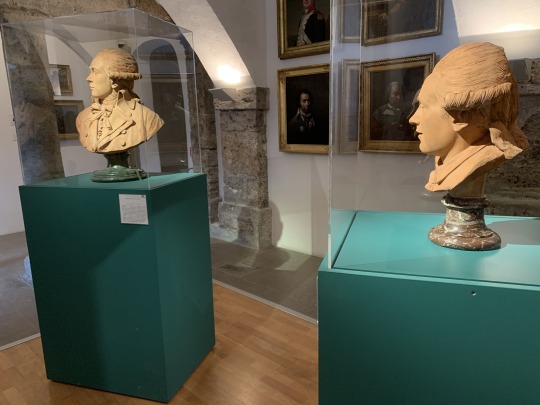
And DJ Saint-Just.

Also special thank you to @citizentaleo for taking me there, I would’ve otherwise been lost in the French mountains lol, thank you!
Maison Robespierre (Arras)
You can visit Robespierre’s residence in Arras. It is possible to visit the inside, but it has a very specific and short opening hours.
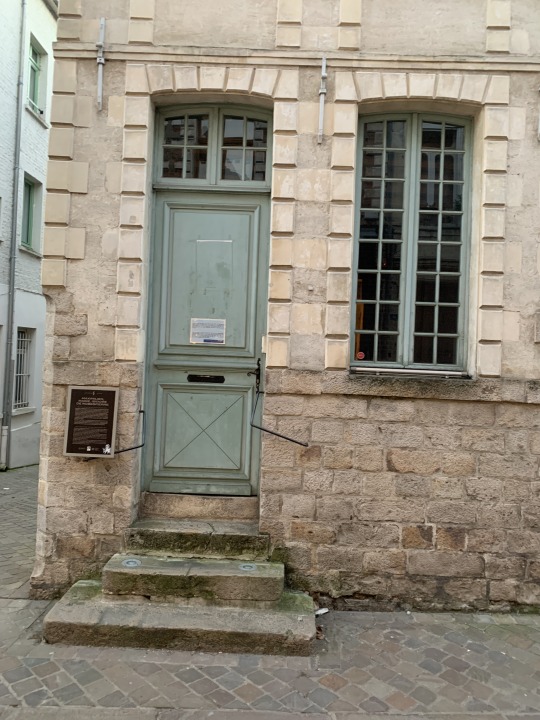
I wasn’t able to go in since I was only in Arras for a few hours….But I got to attend a conference by Hervé Leuwers aaa (He is very sweet and I learned quite few new things from the presentation, but thats post for another day)

Robespierre metro stop (Paris suburb)
There is in fact, a Robespierre metro station on line 9! Not much beyond name but at least some credit to him! Alas it is not exactly within Paris and just on the outskirt. (Oh and there is also Voltaire)

Cordeliers club (Paris)
I dont have much information on what happened to the original location of the Cordeliers club and how it was modified, but the location is part of the sorbonne campus now i believe. I'd be very curious if anyone knows more information on this.
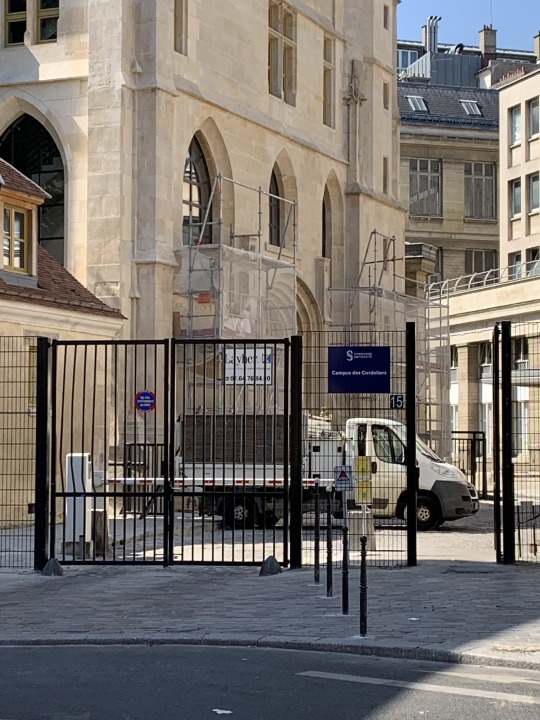
Place de la Bastille (Paris)
The Bastille is of course not there anymore, but the ground around the square and including the metro stations near by have traces/marks of where the old prison would have stood.
(and yea the picture was taken during a manif)
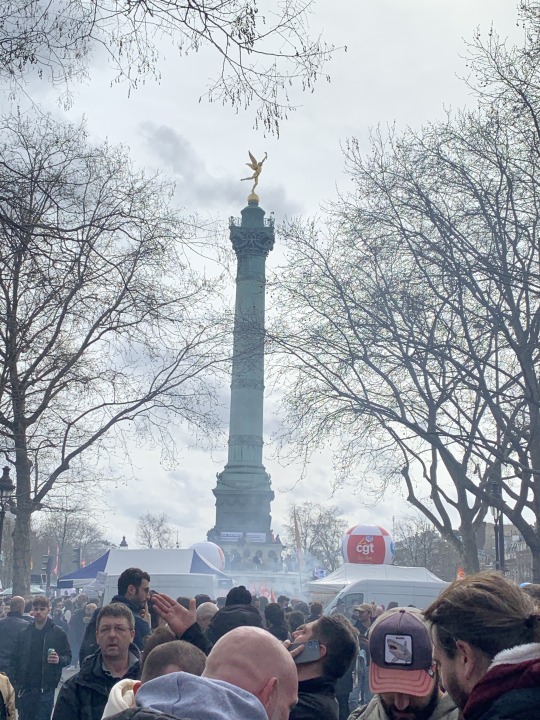
Pavillon de flore (Paris)
The pavillon attached to the Louvre and next to the Pont Royale is the Pavillon de Flore, which is where the Committee de Salut Publique worked.

Jacobin club (Paris)
Alas the original convent in which the Jacobin gathered is no more and replaced by a commercial centre instead (Passage de Jacobins) . There is a sign however recognizing the place for what it was.
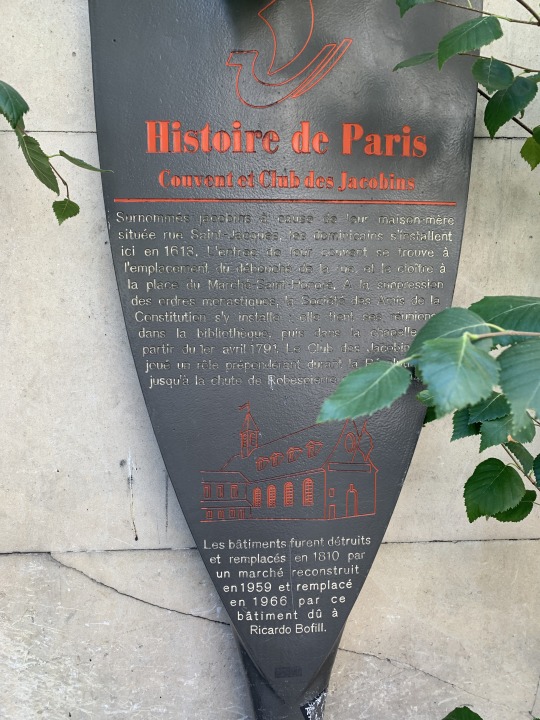
Place de la Concorde (Paris)
Originally Place de la Révolution, there is a plaque remembering the executions that took place here near the obelisk.

Maison SJ (Blérancourt)
I have not been to Saint-Just's house yet, because it is very hard to commute there without a car. But it certainly is still there and (I believe) maintained by the Saint-Just Association.
Catacombs (Paris)
According to wikipedia....The bone remains of many revolutionaries buried in Cimitière Errancis (which has a plaque indicating it in the 8th arrondissement, according to wikipedia) are transferred to the catacombs, including Robespierre, Danton, etc. The catacomb is roughly organized chronologically but there is obviously no sign indicating which bone it actually is.
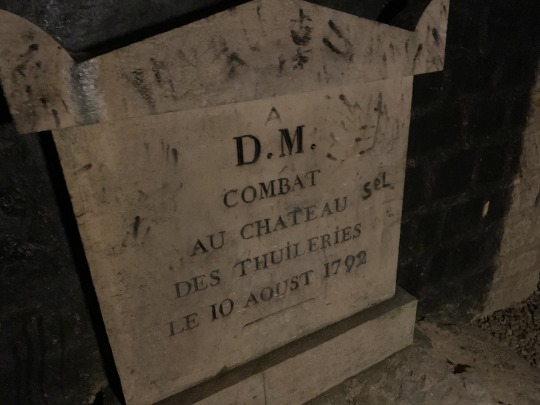
Cluny La Sorbonne station (Paris)
It is on metro line 10 and the waiting tunnel is decorated with signatures of prominent French figures. It doesn't have any actual frev artifacts, but it looks cool and you can spot Robespierre, Danton, and Camille Desmoulins' signatures on the ceiling.
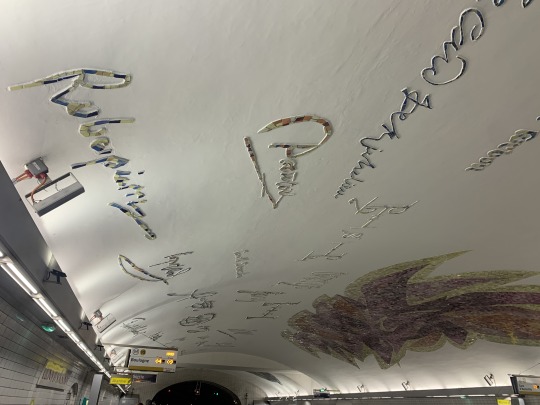
Louis le Grand (Paris)
The school that Robespierre attended is still under the same name and still in use as a school! (i've reached the image maximum alas i cannot add more images...)
And that is all I can think of so far! There is surely a lot more that are out there (including outside of France). Once again, please feel free to mention if you know more frev landmarks that I missed out on.
And to whoever happens to be travelling I hope you find this list helpful to start with.
193 notes
·
View notes
Note
Actually starting to become interested in the Révolution française again, and under your influence, I'm getting curious about Robespierre. Any favorite ressources you would recommend (English, French...) to learn about him?
Oh, I cannot but approve this interest of yours anon ;)
I sure haven't read everything yet, but here's a list everyone else in the fandom will surely complete below!
To learn more about the Frev from a more neutral, less Thermidorian oriented point of view I'd advise Jean-Clément Martin's Nouvelle Histoire de la Révolution Française.
To be introduced to Maximilien I think starting with Cécile Obligi's Robespierre : La Probité révoltante would be good. It's very short and it goes to the point, so that you understand the main ideas first.
Then of course the bible best of all, Hervé Leuwers' Robespierre. Honestly you'll get everything that you need from this, it's a brilliant book.
From then reading Jean Clément Martin's Robespierre : La fabrication d'un monstre will give you all the keys you need to understand his black legend.
When you know what this black legend is about you might find Michel Biard and Philippe Bourdin's Robespierre : Portraits croisés interesting, it's actually the first book I have read about him. It's a compilation of the views of several historians on his various progressive political stances (from memory slavery, propriety, education...)
Then reading Robespierre's sister Charlotte's Mémoires (à prendre avec des pincettes pour des raisons évidentes) would be useful to get a full portrait of the private man (spoiler, that man didn't exist), his family, his domestic life etc.
Then you can read some of his speeches such as Discours sur la religion, la République, l'esclavage. His full works are available to purchase in more than twenty volumes from the Sociétés des Études Robespierristes if one day you want to read, well, absolutely everything.
Aside from books and essays I'd advise to join the ARBR (if you're a student it can only be 5 euros a year if I remember correctly) to get their bulletin trimestriel, l'Incorruptible. There are often some nice pieces of writing in there, always put in perspective with the current politics of France. But you can also just browse the website. They also organise many events taking place in Arras or/and over zoom with university professors as guests. They also have their own reading list here.
Then La Société des Études Robespierristes compiles a lot of ressources and we owe them a lot, they have been actively working to preserve Robespierre's works since 1908 and are fighting to give posterity a juster depiction of him. Their boutique is quite the reference. They are Robespierristes like one was during the late 19th, 20th century, but they do an extraordinary work of compilation and diffusion. You can also follow them on twitter.
Then there are so many others works that I haven't read, like Jean-Clément Martin's essay Il était une fois la Révolution, Loris Chavanette's Danton et Robespierre, le choc de la Révolution, Michel Biard and Marisa Linton's Terreur !
Hope this helps citizen! I realise there's nothing in English, and if anyone wants to give us some recommendations from an English-speaking POV (or German and Italian for myself), I'd love to hear about them.
32 notes
·
View notes
Note
I loved your answer to the key questions about the revolution! It should be used in an essay.
You mean, a historical essay? I am afriad it is not of enough quality. The post started out as my rant and the added context/answers are still written from a very conversational pov. I spoke mainly in the context of "widespread misconceptions about frev/Terror/Robespierre and basic reasons why they are untrue", which is not enough to paint a full picture. I did not mention so many things. So many things. Most importantly, I did not include sources. You always need to include sources when talking about history.
Seriously, I missed so many things. What is king's inviolability? The war- why did France declare war? What was the revolutionary government and how it (was supposed to) function? I spoke almost nothing of the tensions between the government and the sans-culottes, about the Convention and the Paris Commune relations. I only briefly touched upon Thermidor and Thermidorian reaction.
Perhaps most importantly, I spoke almost nothing about what these people were trying to achieve with the revolution (or what they did achieve), etc.
I am afraid that the post is just not detailed enough, and, again, it misses sources. I didn't even give book recommendations. But since I am no less busy than I was when I wrote it, AND because there are professional historians around here, I am giving a quick link to book recommendations for future reading (compiled by resident historian @sieclesetcieux ):
#if you meant an essay on idk 'how people on historical tumblr behave with a pet peeve' or something along the lines then go ahead#but for history always check info#and yes part of the trick is to know which sources to choose#which is why i regret not providing any sources in the answer#it started as my ramble and i never expected it to blow up#i am not complaining - i live when more and more people are interested in frev#but i keep finding the post inadequate and lacking so much info#and sources! it lacks sources#so yeah if it sounds interesting it's best to read sources and research more#there is no other way#ask#anonymous#frev#french revolution
15 notes
·
View notes
Text



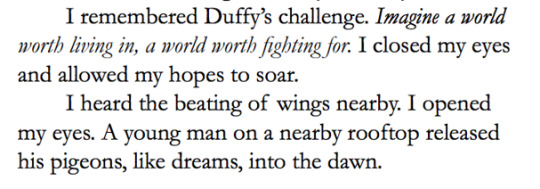

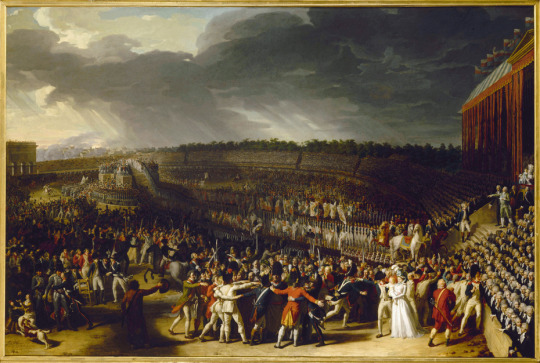


La fête de la Fédération
14 juillet 1790
may sarton/the decemberists/the oh hellos/leslie feinberg/ted hughes/charles thévenin/stephen vincent benet/g.k. chesterton
20 notes
·
View notes
Text
Frev people as videos in my “memes playlist”:
(This is more like a compilation of incorrect quotes)
Marat: [walks into industrial cooler]
Danton: “we’re seeing if the cooler is sound proof.”
Marat: [screams]
Danton: [wheezing]
Desmoulins (over an unconscious man): “ha, look at the buns on that guy-“
Saint Just: [kicks down the door] “this is the comedy police the joke’s too funny.”
Desmoulins, pulling out a gun: “I’m nOT GOING BACK TO JAIL-“
Saint Just: “how does it feel to be the worst cop ever huh?”
Desmoulins: “shut up your mother buys you mega blocks instead of legos.”
Saint Just: “you fucking take that back-“
Charlotte Robespierre: “how to deeply annoy your brothers. Harmonica, vacuum.” [horrendous high pitched harmonica noise]
Maximilien and Augustin: [screaming]
Robespierre: “aww, pigeonnOOO-“
[in a meeting]
Robespierre: [filming]
Danton: [dramatically roller skate dancing to Billie Jean by Michael Jackson]
Saint Just: [slowly skates up with a lobster in a bucket]
Robespierre and Desmoulins: “me and Michael woah wooooah, solid as they come, wöæo-“
Marat: “if you accept that the definition of a word is some letters surrounded by a gap, then xnopyt [screams]”
Desmoulins: “let me, I’m a doctor. Not really but I have a gun-“
Someone: [laughs]
Danton: “alright let’s see what my genetic.. let’s see let’s see. Chamoleon. The fuck is this??? [weird dog barking sound thing??]”
Saint Just, at the dinner table: “take away the bread, cheese, lettuce, tomato and mayonnaise and what have you got.”
Everyone else: “…”
Saint Just: “a fax machine.”
(Will update when I find more videos.) (this is the most inaccurate thing I have posted. Do not take this seriously at all. It is late. My brain cells are no longer able to be controlled. Now is the hour when if they bump into each other as they float through the abyss of my mind I have a thought. Please come back for coherent and serious posts in 3-5 business days, or more accurately, 10 hours.)
#frev#french revolution#claws out for the main 5#maximilien robespierre#robespierre#robespierre protection squad#camille desmoulins#claws out for robespierre#saint just#georges danton#jean paul marat#Asra speaks#I need to stop.
20 notes
·
View notes
Note
hey there! im just starting to get into the FRev. what are some good books about it you'd recommend? can be fictional or non-fictional, im just looking for more material to get into :) thank you!
hiya and welcome to the frev! there are so many books about it that it’s kind of hard to know what to look for; personally, I lean towards material on the revolutionaries’ side, so unfortunately I can’t give much in the way of stuff on the royals, apologies for that!
for a concise introductory history I enjoyed A People’s History of the French Revolution by Eric Hazan, if you’re interested in the Committee of Public Safety then Choosing Terror by Marisa Linton and R.R. Palmer’s Twelve Who Ruled are both solid choices :)
for nonfiction currently i’ve been reading A Place of Greater Safety by Hilary Mantel, and it’s... well, the writing is good, but take some of the characterization with a grain of salt. at least it puts events into perspective pretty well. treat it like nonfiction and it’s not bad. I haven’t read it yet, but 1793 by Victor Hugo looks pretty interesting!
I don’t know if you have any interest in Robespierre, but I cannot recommend Peter McPhee’s Robespierre, A Revolutionary Life enough. it’s fantastic. Slavoj Zizek’s Robespierre: Virtue and Terror compiles all of his speeches too!
if you’re interested in Saint-Just, Geoffrey Brunn’s Saint-Just: Apostle of the Terror is a good intro. I’ve been trying to get my hands on J.B. Morton’s Saint-Just, as well, since it’s packed with lots of neat little facts
I know you specified books, but the Revolutions podcast has a very good and detailed series on the French Revolution which I enjoyed! La Revolution Française is also a fantastic movie, albeit on the longer side.
I’m still a novice when it comes to the frev myself, but I hope this helps, anon! :)
11 notes
·
View notes
Text
People being kept out of the Duplay house compilation
…It was necessary, in order to reach the eminent guest deigning to inhabit this humble little hole of a place, to pass through a long alley flanked with planks stacked there, the owner's stock-in-trade. This alley led to a little yard from seven to eight feet square, likewise full of planks. A little wooden staircase led to a room on the first floor. Prior to ascending it we perceived in the yard the daughter of the carpenter Duplay, the owner of the house. This girl allowed no one to take her place in ministering to Robespierre's needs. As women of this class in those days freely espoused the political ideas then prevalent, and as in her case they were of a most pronounced nature, Danton had surnamed Cornelie Copeau "the Cornelia who is not the mother of the Gracchi." Cornelie seemed to be finishing spreading linen to dry in the yard; in her hand were a pair of striped cotton stockings, in fashion at the time, and which were certainly similar to those we daily saw encasing the legs of Robespierre on his visits to the Convention. Opposite her sat Mother Duplay between a pail and a saladbasket, busily engaged in picking salad herbs. Two men in military garb, standing close to her in a respectful attitude, seemed to be taking part in the duties of the household, obligingly picking herbs, in order to be free to chat more unrestrainedly under the shelter of this familiar occupation. These two men, since famous in their respective positions, were, the one General Danican, who since then, on the 13th Vendemiaire, became impressed with the idea that he was a Royalist, and who perhaps still retains the belief because he is one of England's pensioners; the other was General, later on Marshal, Brune. Freron and I told Cornelie Copeau that we had called to see Robespierre. She began by informing us that he was not in the house, then asked whether he was expecting our visit. Fréron, who was familiar with the premises, advanced towards the staircase, while Mother Duplay shook her head in a negative fashion at her daughter. Both generals, smilingly enjoying what was passing through the two women's minds, told us plainly by their looks that he was at home, and to the women that he was not. Cornelie Copeau, on seeing that Freron, persisting in his purpose, had his foot on the third step, placed herself in front of him, exclaiming: ”Well, then, I will apprise him of your presence," and, tripping upstairs, she again called out, "It’s Fréron and his friend, whose name I do not know." Fréron thereupon said, "It’s Barras and Freron," as if announcing himself, entering the while Robespierre's room, the door of which had been opened by Cornelie Copeau, we following her closely.
Memoirs of Barras: member of the Directorate (1899) page 167-169, regarding a meeting he and Fréron tried to have with Robespierre following their return from Marseilles in March 1794.
Very little time before the cathostraphy where Camille Desmoulins was victim, Joseph Planche, the humanist, the old rhetorics professor at the Bourbon college, who was strongly tied to him, met him in the hooks around Rue de Tournon. Camille was concerned, and told him: ”I’m lost. I went to see Robespierre, and he refused to see me.”
Historie de Robespierre et du coup d’état du 9 thermidor (1865) by Ernest Hame. According to J.M Thompson’s Robespierre (1935), Hamel obtained this anecdote from a friend of a friend of the mentioned Planche.
”…Try to see Maximilien, [said Charlotte Robespierre], you will be content; he was very glad that our younger brother saw you at Melun. On this occasion he spoke with interest of the exercises of your pupils and of the attention you had in entrusting him with presiding over them. I won’t introduce you to him, I would not succeed; I even advise you not to speak to him about me. You will be told he is out, don't believe it, insist on your visit.”
The Robespierre family was housed on rue Saint-Honoré, near the Assomption chapel, the sister and younger brother at the front, the older brother at the back of the courtyard. Gaillard went to Maximilien’s apartment; a young man, looking at him with the most insolent air, said to him, barely having opened the door: “The representative isn’t home…”
“He may not be there for those who come to talk to him about business, but that is not my doing; I will talk to him about his family that I know a lot, you have seen me come out of his sister's apartment who is involved in state affairs no more than I am... Bring my name to the representative, he will receive me, I’m sure of it.”
The fellow did not dare refuse to carry a paper on which Gaillard had taken care to indicate himself in such a way as to be recognized, he immediately came back and gave the visitor his paper saying: “The representative does not know you,” and the door was violently slammed shut!… . The insolence of this brazen man whom Gaillard knew to be the secretary of Robespierre, son of Duplay, to whom the sister attributed the excesses of his brother, the sorrow he felt at losing the hope of saving the judges of Melun and to ensure his personal rest, all these thoughts made him very angry; he calls the young man a liar, insolent, he accuses him of deceiving Robespierre and of increasing the number of his enemies every day, all this in the loudest voice with the intention of being heard by Maximilien and lure him to one of the windows where, surely, he would have recognized him. New disappointment, no one appears and Gaillard goes back to tell Mlle Robespierre about his misadventure.
“I prepared you for it, she told him. ”No one can approach my brother unless he is a friend of those Duplays, with whom we are lodging; these wretches have neither intelligence nor education, explain to me their ascendancy over Maximilien. […]”
La Révolution, la Terreur, le Directoire 1791-1799: d’après les mémoires de Gaillard (1908) page 264-265. This anecdote gets described as taking place somewhere in May 1794.
4 prairial, year 2 of the French Republic, one and indivisible
Nine o’clock in the evening a young girl presented herself at the house of citizen Duplaix [sic], asking to see Robespierre and saying that she had been looking for him for three hours. At the response made by citoyenne Duplaix [sic], the eldest daughter, that Robespierre wasn’t there, this young woman said that it was very surprising he was not at his house and showed a lot of impertinence and humor by saying that he was a public official and made to respond to all those who could come to his house; these threats obliged us to take her to the Committee of General Security.
Signed: Chatelet.
Note written by an agent May 23 1794. The ”young girl” in question is Cécile Renault. Cited in Histoire du tribunal révolutionnaire de Paris: avec le journal de ses actes (1881) by Henri Wallon, volume 4, page 5.
Those whom fate did not lead to the Duplay family presume that it was enough to be introduced to them to see Robespierre: they are wrong; I appeal to the testimony of all his former friends; not one could reach him: the entrance to his residence, similar to Tartarus, was constantly guarded by Cerberians who overshadowed everything... You, whom terror has compressed for so long, have you understood it well? No: to feel its full weight, compelling circumstances would often have had to drag you into its temple, where the sinister look of a Chalabre was sometimes equivalent to a death sentence; where once suspected your loss was sworn, which you accelerated even by no longer going there.
À Maximilien Robespierre aux Enfers (1794) by Paul-Auguste Taschereau-Fargues, page 11.
A young and pretty person aged 17 to 18, accompanied by her aunt, arrives one morning, by carriage, at Robespierre's door, to ask for her father's liberation. These two women speak to Mother Duplay, who they ask if Robespierre is avaliable. “No,” this she-cat replies abruptly. This initial reception intimidated the young person so much that, without daring to open her mouth, she sadly returned to her carriage. As she was about to climb into it, she said to herself that the way in which she had been received was perhaps the result of a lack of formality towards this woman whom, due to her dirty and disgusting attire, she took for the servant of the house. She therefore returns, the 25 livres assignat in hand, to try to make the female dragon yield. Femme Duplay eagerly runs to meet her, and, grabbing her by the arm, says to her: “Now that you are alone, you can go up. Citizen Robespierre really likes young people your age.” This innocent girl got so disturbed that she immediately went back to her aunt, whom she told, completely frightened, about her adventure.
Notes et souvenirs de Courtois de l’Aube, député à la Convention nationale, cited in La Révolution française: revue d’histoire moderne et contemporaine (1887), volume 12, page 929-930.
#robespierre#duplay family#frev#frev compilation#éléonore duplay#françoise duplay#simon duplay#charlotte robespierre#fréron#barras#forget guard dogs where can i get myself a guard duplay
24 notes
·
View notes
Text
pissed off robespierre engravings compilation
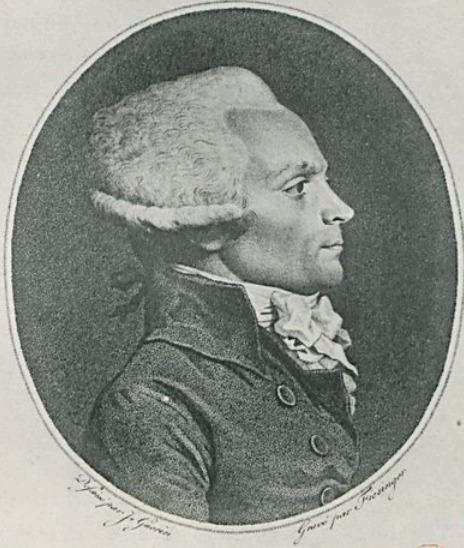

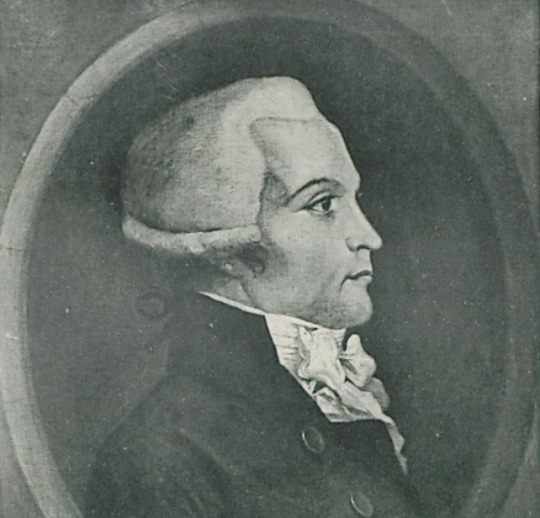



you could do an increasingly verbose meme with these pictures
#frev#cursed robespierres compilation#his body is shrinking#The first (and only good) one is the original
33 notes
·
View notes
Text
First Real Estate Investment Trust of New Jersey (FREVS) Compiles Losses For the Week - FLBC News
http://ift.tt/2wVdXHn via www.mycreopoint.com
0 notes
Text
Contemporary descriptions of the hébertist execution compilation
The joy of the people was universal at seeing the conspirators taken to the scaffold. There were the same demonstrations of joy everywhere; a sansculotte jumped up and said: “I would light up my windows this evening, if candles were not so rare.” In the evening, in all the groups and cafes, people talked about the death of these conspirators; the story of their last moments was the only subject of conversation. It was said in several places that Hébert had denounced around forty deputies. It was time, they added, that this conspiracy was discovered, because it was believed in several departments that Paris was under fire. […] According to the comments made on the Place de la Révolution, during the appearance of the conspirators on the scaffold, one noticed that there were people placed to sow trouble. One woman was beaten by another for having made some comment. While the 19 conspirators were being guillotined, the people remained silent; but when Hébert’s turn came, a swarm of hats appeared, and everyone shouted: “Long live the Republic! This is a great lesson for those who are consumed by ambition; the intriguers have done well; the committees of public safety and general security will manage to discover them, and ça ira!”
Tableaux de la Révolution française publiés sur les papiers inédits (1869) by Adolphe Schmidt, volume 2, page 186. ”Situation in Paris 4 Germinal Year 2” (March 24 1794).
The events of yesterday, that is to say the judgment of the conspirators, their journey from the Palace to the Place de la Révolution and their execution, have entirely absorbed the attention and feelings of the people. Everyone wanted to at least see them pass so that they could judge the impression made on their wicked souls by the sight of an immense people, outraged by their crime, and the knowledge of the imminent death they were going to suffer. The crowd of curious people who were on their way or who witnessed their execution was innumerable. [...] Two opposing feelings, indignation against the guilty and joy at seeing the Republic saved by their death, animated all the spectators. One tried to read the faces of the condemned to enjoy, in a way, the internal pain from which they suffered: it was a kind of revenge that they took pleasure in obtaining. The sans-culottes were especially angry with Hébert and insulted him. “He’s damn angry,” said one, “we broke all his stoves (fourneaux).” “No,” said another, “he is very happy to see that the real aristocrats are going to fall under the guillotine.” Others carried stoves? (fourneaux) and pipes and raised them in the air so that they could strike Father Duchesne's eyes. Regardless, this wretch could not pay any attention to what was happening around him; the horror of his situation appalled him; he had reproached Custine for dying as a coward, and he showed no less pusillanimity than him. Momoro put up, as they say, a brave face against bad luck, he pretended to be confident, talked to his neighbors and laughed a wicked laugh. [...] Cloots appeared calm, Vincent lost, Ancart and Ronsin furious and Hébert overwhelmed. The latter was the star of the show, he appeared last [on the scaffold].
Report by the police spy Grisel, March 25 1794, cited in La Liberté ou la Mort: mourir en député (2015) by Michel Biard.
On D-Day, March 24, 1794, an “innumerable crowd” impatiently awaited the execution of Father Duchesne and his accomplices: “Advancing from the place of execution of Paris, one encountered waves of citizens on their way there; everything resounded with the cry of “Father Duchesne to the guillotine!” and in this respect the children acted as peddlers.” Another agent remarks that “in the streets, from the Palace to the Place de la Révolution, the crowds of people were so great that one could barely pass through.” The police estimate (already!) claimed that “perhaps four hundred thousand souls witnesses to this execution.” […] If the legend claiming that Hébert fainted in the tumbril seems false, all reports corroborate on the other hand the moral and physical collapse which this great sermonizer presented: […] “It was noticed that Ronsin seemed the least frightened by his execution, that Anacharsis Cloots had retained great composure, but that Hébert and the others bore on their faces the signs of the greatest consternation;” [Another report states that]: “Of the nineteen culprits dragged to execution, Hébert was the one who presented the saddest and most dismayed face.” Taken from the Palace to the Place de la Révolution amid cries of joy and insults (“Everywhere they passed one shouted “Long live the Republic!,” and threw hats in the air and everyone said some epithet to them, especially to Hébert.”), Father Duchesne was not yet at the end of his troubles. To make the feast complete, a cruel staging allowed him to meditate on his fate: “Upon his arrival on the Place de la Révolution, he and his accomplices were greeted by boos and murmurs of indignation. With each head that fell, the people took revenge again with the cry of “Long live the Republic!” while throwing their hats in the air. Hébert was saved for last, and the executioners, after putting his head through the fatal window, responded to the wish that the people had expressed to condemn this great conspirator to a punishment less gentle than the guillotine, by holding the suspended blade for several seconds on his criminal neck, and throwing, during this time, their victorious hats around him and attacking him with poignant cries of ”Long live this Republic that he had wanted to destroy.” As can be seem, one knew how to have fun in those days. However, as soon as the affair was completed, the agents noted contrasting reactions among the people: “In all public places, the aristocrats and the moderates rejoiced at this execution and affected a lot of patriotism. The patriots also rejoiced, but they observed one another.” [Another report states] “I visited different cabarets near the Gros Caillou, near the Military School. They talked only about Father Duchesne, about whom a thousand stories were made with the intention to bless the Committee of Public Safety for having discovered such a betrayal. I found the little people cheerful”; [Another report states]: “The walks are everywhere full of people and everywhere one stays and asks: “Did you go to see Hébert yesterday?” One answers “yes”. All the faces seem happy.” [Another report states]: “Since Hébert’s death, I have noticed that, in cafés, men who talked a lot no longer say anything.” This is because the execution of Hébert and his supporters, although it purged the Mountain of its extremists, nonetheless shook the people’s confidence in their leaders. Who would believe if even the most ardent patriots could suddenly become traitors? At least one thing is certain, that is that beyond the unconscious dismay which struck the people after the execution, the great cowardice which Father Duchesne demonstrated before the guillotine ended up destroying him in the eyes of everyone: “After the execution, everyone was talking about the conspirators. They said: “They died like suckers”; others said: “We would have thought that Hébert would have shown more courage, but he died as a good-for-nothing.”
Series of police reports found in Paris pendant la Terreur (1962) by Pierre Caron, cited in this blog post.
The execution took place in the afternoon around 5 o'clock, at the Place de la Révolution. A prodigious crowd of citizens filled all the streets and squares through which they passed. Repeated cries of long live the Republic and applause were heard everywhere. These testimonies of the indignation of the People against men who had just so eminently compromised the salvation of the Fatherland, were proportionate to the extreme confidence they had in the art of surprising them; and the public satisfaction whose feeling was mixed with this deep indignation was a new proof of the love of the citizens for the Republic saved by the punishment of these great culprits. Thus perishes anyone who dares to attempt the re-establishment of tyranny!
Gazette Nationale ou Moniteur Universel, number 185 (March 25 1794)
It was 18 of them who suffered the death penalty due to their crimes... It was Father Duchesne, this scoundrel, who was cursed by all the people. If he had been susceptible to remorse, he would have died of shame before his arrival, in front of Madame Guillotine... He was the last to be guillotined, each of the closest spectators continued to reproach him for his villainy...
Letter written by the Convention deputy Ayral Bernard, March 26 1794
Hébert, Ronsin, Vincent, and the other conspiracy defendants whose names and qualities we reported in previous issues, were sentenced to death by the revolutionary tribunal. Only one was acquitted; Laboureau: he was immediately set free; the president of the tribunal embraced him and made him sit next to him: the room resounded with the liveliest applause. The other defendants said nothing when they were sentenced; the Prussian Cloots appealed to the human race, of which we know that he had made himself the speaker. Ronsin wanted to say a few words, he was removed alongside the others. Femme Quetineau declared herself pregnant. Taken back to the Conciergerie, the condemned asked for half a septier of wine and a soup. Around four in the afternoon, they left on three tumbril to go to the execution. Never had an execution attracted such a considerable crowd of spectators; everywhere they passed, one clapped hands, tossed hats in the air, and shouted vive la république ! They seemed quite insensitive to the indignation that was brewing against them: arrived at the foot of the scaffold, they all embraced each other. Hébert, known as Father Duchesne, was the last to be guillotined; his head was shown to the people, and this spectacle provoked clapping of hands and universal cries of vive la république !
Annales Patriotiques et Litteraires de la France, et Affaires Politiques de l’Europe, number 369 (March 26 1794)
The republic has once again been saved: 19 leaders of the conspiracy hatched for its ruin were sentenced to death today, 4 germinal, at half past twelve. The flattering sword of the law struck their guilty heads: these traitors marched towards the scaffold with all the audacity of crime; some laughed, others raised their shoulders: Father Duchène appeared to be neither in great joy nor in great anger; the people applauded and stood in crowds in the places through which the procession was to pass. A lot of cavalry and infantry preceded, accompanied and followed the tumbrils carrying the conspirators: but armed force became useless, because joy was universal.
Le Courier Belgique, number 39 (March 31 1794)
Here is an anecdote which can serve to make better known the eighteen conspirators whom the sword of the law has struck down. On the day of their execution, several heads had already fallen when General Laumur's turn had come. Ronsin and Vincent looked at him at the scaffold and said to Hébert: ”without the clumsiness of this j... f... we would have succeeded.” They were alluding to the indiscretion of Laumur, who would tell anyone who would listen that the Convention had to be destroyed.
Suite de Journal de Perlet, number 555 (March 31 1794)
My father told me that only once, during the Revolution, he found himself stuck in the crowd, without being able to move forward or backward, as the fatal tumbril passed. It was the one who carried the Hébertists. Cloots, placed at one end, said to the spectators: “My friends, please do not confuse me with these rascals.”
Mémoires sur Carnot par son fils (1861) volume 1, page 366.
-
Previous parts of this totally family friendly series:
Contemporary descriptions of the dantonist execution compilation
Contemporary descriptions of the robespierrist execution compilation
#happy 230th deathday guys!!#french revolution#frev#frev compilation#hébert#momoro#no one likes hébert…#like jesus they REALLY hated him
22 notes
·
View notes
Text
Élisabeth Lebas talking about Robespierre like he’s the Messiah or something compilation
[Edgar Degas] told me that, when he was a child, his mother one day took him to rue de Tournon to visit Madame Lebas, widow of the famous Convention deputy who, on 9 thermidor, killed himself with a pistol. When the visit was over, they withdrew with small steps, accompanied to the door by the old lady, when Madame Degas suddenly stopped, deeply overwhelmed. Letting go of her son's hand, she pointed at the portraits of Robespierre, of Couthon, of Saint-Just, that she had just noticed were hanging on the walls of the antechambre, and she couldn’t keep herself from crying out with horror: ”What! You still keep the faces of these monsters here!”
”Be quiet, Célestine!” Madame Lebas cried out ardently, ”be quiet… They were saints!”
Discours de l’Histoire prononcé à la distribution solennelle des prix du Lycée Jeanson-de-Sailly held by Paul Valéry on July 13 1932, cited in Robespierre ou les contradictions du jacobinisme (1978) by Albert Soboul.
I was able to converse, between 1838 and 1839, with a famous parrot who had been the friend of Robespierre. He belonged to Mme the widow Lebas, the wife of the famous Convention deputy who chose to die with Robespierre, and the mother of M. Lebas, Hellenist scholar, who died a few years ago. Mme widow Lebas, a very respectable woman, whom I had the honour of seeing often in her little house in Fontenay-aux-Roses, where she would make the sign of the cross when she pronounced the name Robespierre, adding these words: Saint Maximilien. As for her parrot, when one said "Robespierre", it replied Hats off! Hats off! It sang the Marseillaise with perfect diction and Ça ira like a Jacobin. It was — and perhaps, thanks to its diet of grain, still is — a sans-culotte parrot, the like of which can no longer be found. Mme Lebas recounted with great emotion how she had managed to save this precious psittacus after Thermidor. It had been seriously compromised. After the arrest of Robespierre and Lebas, in the course of a long domiciliary inspection, every time the name of Robespierre was pronouned the parrot would repeat its refrain, Hats off! Hats off! The government agents had grown impatient and were about to wring its neck, when Mme Lebas, as quick as lightning, grabbed the bird, opened the window and set it free. The poor parrot flew from window to window, until it found a charitable person to open up for it; a few days later Madame Lebas was able to regain possession of this last friend left to her by Robespierre, the only one perhaps, besides his elderly mistress, who has remained faithful to his memory.
L’Union médicale: journal des intérêts scientifiques et pratiques, moraux et professionnels du corps médical (1861) volume 12, page 258-259.
Finally our providence, our good friend Robespierre, spoke to Saint-Just to engage him to let me depart with [him and Lebas], along with my sister-in-law Henriette.
Élisabeth’s memoirs, cited in Le conventionnel Le Bas: d’après des documents inédits et les mémoires de sa veuve (1901), by Stéfane-Pol, page 131.
…If you had been informed of my residence, I would have been eager to tell you the truth. The good that you say of our martyrs is not too charged: they were the true friends of liberty; they lived only for the people, for their fatherland; but some monsters, in one day, destroyed everything; in one day they assassinated liberty. Yes, monsieur, a republican like you would have been happy to know those men, so virtuous on all accounts; they all died poor.
Note written by Élisabeth a few years before her death regarding ”a work treating the revolution” (l’Histoire des Girondins?). Cited in Ibid, page 147.
#élisabeth lebas#élisabeth duplay#robespierre#maximilien robespierre#frev#frev compilation#originally i was just planning to compile all the times babet says he’s virtue boy number 1#then i was like ”…you can actually make a decent compilation only of times she uses religious adjectives to describe him??”
34 notes
·
View notes
Text
Abbe Proyart talking shit about his former students compilation
(With the exception of student Robespierre, who he spoke so much shit about you can make a whole post only about it)
Camille Desmoulins, Robespierre's warmest friend and most ardent advocate, was the son of a Lieutenant-General of the Bailliage of Guise in Picardy. Appointed as scholar by the Chapter of Laon at the College of Louis-le-Grand, he completed his studies, if not with distinction, at least with some success. Although from then on he wrote his scholastic compositions well, he spoke very heavily and stammered in speech. He had an ugly and repulsive exterior, a black complexion, and something sinister about his eyes. He had nevertheless announced in his early youth the double emulation of work and virtue; but, disturbed in his higher classes by vicious comrades, he abjured piety, and soon showed himself a more bitter enemy than even those who had driven him away from it. From then on, a muddled spirit, surly and eloquent, he made himself odious to all his fellow students, and no longer had a single friend among them. We then saw him, son of nature and ungrateful disciple, displaying all the feelings of a bad heart. He made his debut at the bar with a plea against his father, whom he pretended to oblige to furnish him in Paris with an interview which exceeded his faculties. He never forgave his Masters for the efforts they had made to correct his budding vices. In the time of the Revolution, he was still cruelly resentful of one of them, on the occasion of a close encounter fifteen years earlier. “I will never forgive him, he said, for having told me one day that I would mount the scaffold.” However, if the horoscope wasn’t flattering, it was nonetheless verified. We shall see later how, still believing himself to be the friend of Robespierre, he was rewarded for his revolutionary labors by his friend.
La vie et les crimes de Robespierre, surnommé Le Tyran, depuis sa naissamce jusqu’à sa mort(1795) by Le Blond de Neuvéglise (abbé Proyart), page 93
Fréron, in his youth, showed a gloomy and defimulated character, especially near his masters. He announced rather few talents, and no will to cultivate them; he was also cited as a rare example when speaking of laziness and indolence. He was one of those indifferent to religion to whom justice is done by always suspecting their morals. Coming out from the college, he walked his impoverished existence for a long time on the pavement of the Capital, a burden equally incumbent upon both his family and Abbé Royou, his protector and brother of the estimable Madame Fréron.
Ibid, page 90
Duport-du Tertre, born in Paris, of a not very wealthy family, after having done fairly good studies at the College of Louis-le-Grand, became a lawyer, and got a certain reputation, above all, for probity and justice. He was of a gentle and honest character, although a little cold. He loved work and solitude. His conduct at the College had always been good; but of a wisdom more philosophical than religious. He was not born to be a scoundrel, and it cannot be said that he was; but he had not enough religion to cling to, in a slippery step, to the great principles which it enshrines, and he abandoned them. As Constitutional Minister, he tried to serve the Constitution and the King; and, without doing anything useful for the King or for the Constitution, he could not escape the guillotine. It had been less by any particular affection than at the request of his old college comrades whom Duport-du Tertre had endeavored to make known to Robespierre, whom he knew little of himself. Robespierre, in return for the disinterested zeal he had shown him on his arrival in Paris, worked harder than any other Jacobin to make him suspect and determine his execution.
Ibid, page 85-86
Le Brun, known in his youth under the name of Abbé Tondu, was from Noyon. Provided by the Chapter of this City with a scholarship assigned to young clerics, he found himself a contemporary of Robespierre at the College of Louis-le-Grand. He had made less of a sensation than him in his humanities, but showed more talent in philosophy. He then bore an extraordinary depth of timidity, which he retained something of his whole life. He was one of those soft and easy characters who, having neither the boldness of crime nor the courage of virtue, become what circumstances and societies that surround them make them into. The Abbé Tondu, who liked neither his estate nor his name, left both at the same time, and called himself Le Brun, after his mother. Leaving the college, he obtained at the Observatory one of the Places paid by the King to young men who had a marked inclination for Mathematics. The bad companies having thrown him into licentiousness, he pledged himself to it. […] The tottering Minister tried in vain to rely on his old liaisons with Robespierre: Robespierre no longer knew as a friend the one who could also have been friend of a man whose pride had always revolted his own. Le Brun did not cause the death of the King; but, like Dumouriez, he had the cowardice to consent to it; and, like him, he truly became its accomplice, while doing nothing of all that he ought to have done to prevent it, or to provoke vengeance.
Ibid, page 87-88
Noël, born under the name Dumouchel to poor parents, had received, like Robespierre, the gratuitous education of the poor. Student first at the College des Grassins, then at that of Louis-le-Grand; after rather brilliant successes in the distribution of the University Prizes, he was made quarter master, and then professor, at the College of Louis-le-Grand. This sudden passage, from extreme poverty to the last term of ambition among the young masters of the university, turned his head. He had little religion, he became impious. At the beginning of the Revolution, his sentiments, expressed in a journal of which he had made himself the editor, earned him a post as clerk in the war office, and then a secret mission on the part of the Jacobins in a foreign court. Friend of Camille Desmoulins, the latter had introduced him to Robespierre when he arrived in Paris for the Estates-General. Robespierre, although welcomed and celebrated by Noël, had conceived against him a fund of aversion, because he had obtained more constant successes than him at the University, and because Camille Desmoulins never ceased to exalt his talents. He spared him at first as a proponent useful to his views, then fell out with him, and then lost him as soon as he found the occasion.
Ibid, page 86-87
It is again from this school that came two low servants of these man-tigers, and the worthy adjudans of their villainy: the name of one was Sijas, that of the other Pilot. Sijas had obtained, from his college comrade Robespierre, the employment of confidence of overseeing the massacres of the guillotine in Paris; and Pilot, exercising the same Commission in Lyon, wrote to Robespierre that the pleasure of seeing the Lyonnais having their throats cut restored his health.
Louis XVI détrôné d’être Roi, ou tableau des causes de la Révolution française et de l’ébranlement de tous les trônes (1803) by Abbé Proyart, cited in Le collège Louis-le-Grand, séminaire de la Révolution (1913) by H. Monin.
And some of his fellow teachers too…
None of his masters contributed so much to the growth of the republican virus fermenting in his (Robespierre’s) soul than his Professor of Rhetoric. An enthusiastic admirer of the heroes of ancient Rome, M. Hérivaux, nicknamed The Roman by his students, thought that Robespierre’s personality had a strong Roman physiognomy. He praised him, cajoled him unceasingly, sometimes even congratulated him very seriously on this precious similarity. Robespierre, no less seriously, favored compliments, and was grateful to bear the soul of a Roman, be it the atrocious soul of a parricidal Brutus, or that of a conspiratorial Catiline.
La vie et les crimes de Robespierre… (1795) page 46-47
One day, however, a prefect, suddenly opening a door, finds him (Robespierre) on the commode reading a very nasty pamphlet. Caught in flagrante delicto, Robespierre thought himself lost; and, forgetting his natural pride, falls at the feet of the Arbiter of his fate and comes down to the humblest supplications. The Master with whom he had to deal was neither inflexible nor fervent in Morale. He was a man who had been heard more than once to exclaim among the young people: "Long live liberty, my friends: far from us the hypocrisy.” It was the Abbé Audrein, who since deserved, by his apostasy, to become the collegue of Robespierre in the Assembly of Factious, where he still sits. With such a judge, the affair of the bad book was civilized without difficulty, and did not even come to the knowledge of the other Masters of the House.
Ibid, page 37-38
Dumouchel, son of a poor Peasant from Picardy, would not have found within his family any resource for his education: the Sanctuary and the charity of the Faithful paid all the expense. Scholar of the Community of Ste. Barbe, he entered the College of Louis-le-Grand in quality of a quarter master. He fortified himself to go and teach Rhetoric at Rhodez, from where he was called back to Paris to occupy a chair at the College de la Marche. The Abbé Royou, to whom he paid court, had employed him, for a time, for the drafting of certain unimportant articles of his journal, which he had no leisure to deal with himself. A fairly ritual appearance, a supple character, a lot of talk, a little literature, and many more ambitious pretensions had given Dumouchel a certain reputation among that swarm of deplorable subjects which filled the Colleges of Paris; and, by their votes, he found himself Rector of the University at the time of the holding of the Estates-General. Hiding his unbridled ambition and his irreligion under the mask of the most complete devotion to the respectable Archbishop of this Capital, he united the voices of the Clergy for the Deputation. Scarcely had the Hypocrite been in possession of the title he aspired to, than, abandoning the sacred interests which had been entrusted to him, he formed an alliance with Robespierre, whom he at first advocated, and of whom he was later advocated, so much so that the Jacobins of Paris, judging him worthy of the Episcopat, sent his name to the Club of the town of Nismes, with the injunction to make the subject known to the electors of the department, as the one who suited them and whom they should name. All the Catholic Electors, with the exception of two, having refused to cooperate in the crime of an intrusion by Eve that the Protestant Electors, less delicate, assembled, gave their votes to the one whom the Jacobins had designated for them; and Dumouchel, proclaimed Constitutionally Catholic Bishop that, by fifteen Electors only, of which thirteen were Protestants, said goodbye to his friend Robespierre, and went to install himself in the Episcopal Palace of Nismes, which soon, as we know, was defiled by the most scandalous Scenes.
Ibid, page 83-85
#spontaneously i’d say teachers telling students they’re going to get executed is a bit more serious than students being too ungodly#though that might just be me#really sounds like something camille would get told after having gotten on the nerves on a teacher though so i bet it’s true#just as much as i bet proyart was the master telling him#abbé proyart#robespierre#desmoulins#fréron#louis-le-grand#frev#frev compilation
38 notes
·
View notes